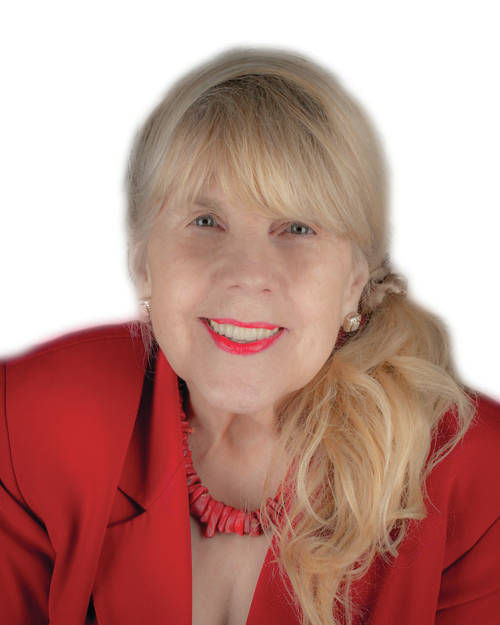
When Penny Adams of Piqua, Ohio, a Vietnam War U.S. Navy veteran, entered the Nauticus at the Hampton Roads Naval Museum in Norfolk, Virginia, in 2019 to serve as a member of a panel entitled “To Bind Their Wounds,” she was first greeted by signs: 10,000-Day War at Sea followed by Why Did the U.S. Go to War in Vietnam?
She walked further to see her words and her name inscribed on a wall in answer to the question: “We were saving lives. It was our job to be there.”
Adams asked to go to Vietnam because, “non-nurse women in the military couldn’t be sent there: we had to volunteer,” and “it was an opportunity to do a job that the U.S Armed Forces would let women do. Further, by my serving on a hospital ship, I could free up a man to work ashore.”
A 1960 graduate of Piqua Catholic High School, the daughter of Paul K. Marshall, a master sergeant in a B-24 bomber group in World War II who had earned a Bronze Star as a logistical planner for “200 missions with minimum loss of life and aircraft,” Adams was a 1964 graduate of Ohio Dominican College with a biology major and medical technologist certification. She earned that certification in medical technology at Mount Carmel Hospital in Columbus during her senior year of college, always carrying with her the words of President John F. Kennedy, “ask not what your country can do for you; ask what you can do for your country.”
Her basic training was in Newport, Rhode Island, at the U.S. Navy Officers Candidate School where she learned that as an officer, the buck stopped with her, that she was responsible for those she supervised, and that good enlisted personnel were essential for an officer to do her job.
Following service at the National Naval Medical Center at Bethesda , Maryland, (1964-1966) and at the U.S. Naval Hospital at San Diego, California, (1966-1967), she was off to Vietnam in October of 1967 as head of the Laboratory and Blood Bank aboard the USS Repose, a trauma ship that floated in the South China Sea moving to where it was most needed: Da Nang, Dong Ha, Quang Tri, and transferring patients to Clark Air Force Base in the Philippines for their return stateside.
The USS Repose had earlier been a utility supply ship in World War II and had been retrofitted and brought up to standards with 350 hospital beds, a medical laboratory, and a morgue.
With personnel aboard totaling close to 400, all had been blood typed in case there was a blood shortage and blood was needed to treat the incoming wounded. Attempts were always made to take blood from persons who could be replaced for the required 12 hours off duty following a donation. In addition, during trips to the Philippines for re-supply, there was a donor draw from personnel on ships nearby.
Adams reports that the nine-person crew in the laboratory was “reliable, well trained, and willing to work even when a twelve- hour shift became a ‘port and starboard,’ one which might mean fifteen hours. When the helicopters landed on the ship, we could expect 5 to 15 incoming wounded. When the Jolly Green Giants ( CH-47s) arrived, they had to park sideways on the runway.
“I had to send men home who would be non-functioning for the rest of their lives; someone would always have to take care of them Their brains were still alive, but their bodies were ruined,” Adams indicates.
She continues, “I would get attached to a patient for a period of time, but I had to move on to the next one, triaging in my mind.”
Adams, at age 24, endured the usual harassment a female in the Navy might expect. Her standard uniform required that she wear a skirt, and once as she stood at the bottom of a ramp waiting to receive incoming wounded, a chief petty officer admonished her, “You can’t be talking to enlisted men. I don’t know what you women are doing here anyway. This is a man’s navy.”
Her response was, “Here’s the story , chief. I have a job to do. The Navy doesn’t agree with you, so here I am.”
And there was the case of a field officer who came to sick call with a case of gonorrhea and expecting a male to be in charge proclaimed, “ I want to see the officer in charge.”
Her response was, “I am the officer in charge.” He was ready to go home on leave, but the Navy required he be treated. Her query, “Is this your signature on this slide?”
“Well, yes.”
“You have gonorrhea, and you’re not going anywhere ‘til it’s gone.”
In conclusion, when I asked Adams if she wanted to return to Vietnam, she was firm in her declaration, “No intention of returning. We left enough there that I don’t need to look back. Troops on the ground can never recover those days, that time, that part of their lives. Although if I was asked, I would go back.
“We left millions in equipment, buildings, jeeps, tanks – things. Before I went, I thought the government knew what they were doing: We were there to help people.
“Afterwards, I felt there was an ulterior motive, political machinations, politicians running things who had no idea what they were doing. People in Vietnam didn’t want us there. They felt we wanted to change them to be like us.
“I have gone to The Wall several times, but I don’t look for anyone’s name. I don’t want to remember patients’ names, but I will never forget them or the year I spent caring for them.”
I’m certain, however, that some of those patients remember her kind face, her dedication, her expertise in caring for them and with me want to say, “Thank you.”


